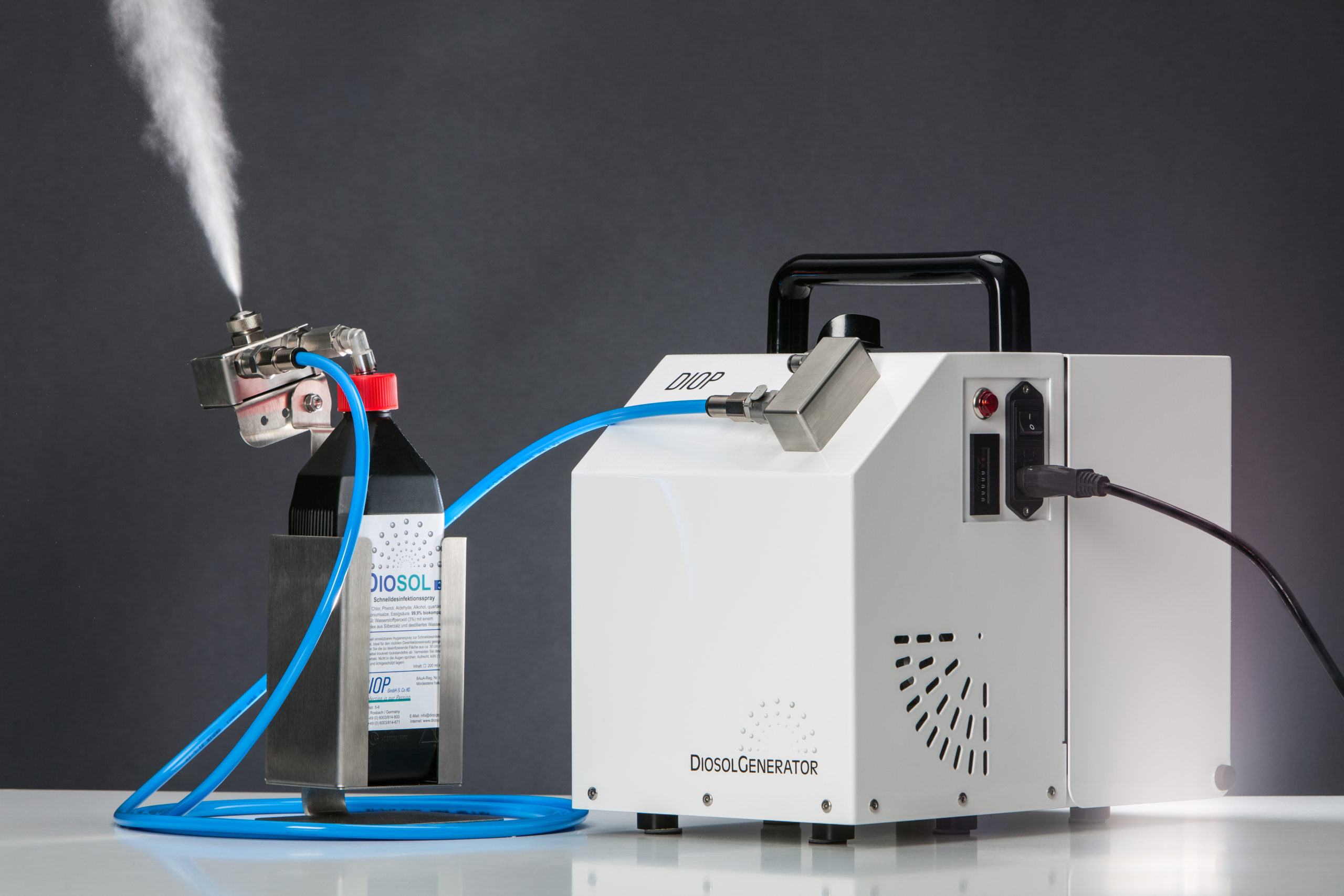
AUTOMATED SHIP DISINFECTION THROUGH H2O2 COLD ATOMISATION
1. Effective against the complete microbial spectrum of bacteria, fungi, viruses & spores
2. Best room disinfection results by wetting all surfaces, furniture, equipment, etc. down to the smallest gaps.
3. Complete, clinically tested preparation of whole cabins, kitchens, wet rooms etc.
4. Proven, automated processes in cabin preparation (RKI listed!) Hydrogen peroxide processes have been recognized by the Robert Koch Institute since 2013
5. Low staff and time commitment Relief of crew and cleaning team
6. No post-cleaning necessary No leaving behind of toxic residues to be wiped, damp or sticky films
7. Odour neutralisation For example, with water damage, smoke and animal odours
8. Reviewed and applied many times with regards to surface compatibility Tested on sensitive medical devices among other things. Also compatible with fruit and vegetables, leaving no residues or impairments

German RKI-approved procedure: Cold atomisation with H2O2
Cold atomisation in many areas of the
economy such as healthcare, food
production and in the pharmaceutical
industry, has been a commonly approved
and frequently used technology
for surface and indoor air disinfection
for many years. The active ingredient,
in this case hydrogen peroxide (H2O2),
is atomised with a special nozzle. This
results in residue-free disinfection of
all surfaces, objects and indoor air.
This technology was approved for the
first time in 1985 in the United States.
In Germany it was added to the list
of tested and approved disinfectants
and disinfection procedures by the
Robert Koch Institute (RKI) in 2003.
Today cold atomisation is a proven
method for the RKI scopes A, B, C
and D in diverse operation areas.
The big advantage of the atomisation
of H2O2 is that hydrogen peroxide disintegrates
in natural water and oxygen.
The product we use is a special
hydrogen peroxide which is checked
according to the VAH* criteria.
The decisive factor here is that the
tests were passed "without wiping"
and with "high organic charge".
